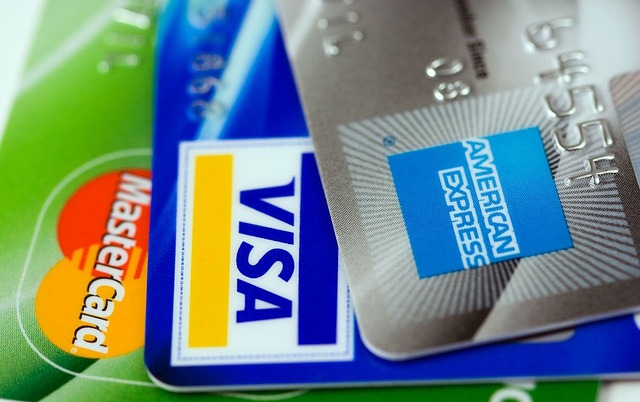Credit cards are an important financial product nowadays for everyone. But they come with an associated cost in terms of applicable credit card fees. These are fees for operating and maintaining the credit card. As a credit card is a revolving credit line or a loan from a bank. If you do not pay the loan on time, there are applicable penalties or fees on the borrower.
As per the Consumer finance bureau, the USA has the highest outstanding balance of almost a trillion dollars. Further, Americans pay in excess of $120 billion every year in interest and fee charges to the credit card companies. More than 175 million customers have one or more credit cards.
Various kinds of Credit Card fees
Credit cards apply various types of fees. These could be genuine fees such as annual fees, foreign transaction charges, or such other charges. They may also apply other fees or interest charges on outstanding balances.
For example late payment fees, balance transfer fees, cash advance fees, and finally the APR. We delve into each of these fees and will also help our user to identify correctly what are applicable fees.

Annual Percentage Rate (APR)
The Annual Percentage Rate refers to the interest rates applicable on a credit card. In layman’s terms, this is the interest the bank will levy on the balance on your credit card. If you have a credit card with an applicable APR of 22%, it means that any balance you carry past the due date will have this much interest.
APR could be of 3 types: fixed, variable, and introductory or promotional APR. In the fixed rates, your APR is likely to stay the same throughout the time you have your credit card. Variable rates may increase or decrease depending on the federal rates as well as the risk categorization of a borrower.
Promotional or Introductory rates include 0% or low-interest periods offered as introductory rates by credit card companies.
If you pay the amount in full by the last date, you will not be charged any APR or late fee. If you fail to pay or only pay the minimum due, the APR will start kicking in. As every month has different days, credit cards will multiply the average daily balance by the daily periodic rate.
To calculate, the daily periodic rate is to divide the APR by 365. This average rate is then multiplied by the outstanding balance. This daily periodic rate is applied to the daily outstanding balance.
Illustration of APR
For example, if you have a balance of $1,100 on your credit card on the 1st of the month. Or we can say you make a purchase on the 1st day of the month.

Say, the applicable APR on the card is 22%.
The applicable daily periodic rate is 22% / 365 = 0.060274%
Further, your last date of payment is the 28th of the month.
If you pay only a minimum of say ($100) and do not pay anything.
The applicable daily interest charged would be = $1,000 * 0.060274% = $ 0.6024 or only 60 cents a day.
Now, this is a fallacy as you might think that it is such a small amount. But the bank will compound the interest rate every day. They will also charge interest from the day the purchase was made.
Finally, the applicable interest would be = 28 * 0.6024 = $16.86
This might again seem like a small amount, but there are other fees also to consider with a credit card. Like the Late payment fees to be paid as well.
Late Payment Fees
Every time the cardmember delays the balance payments. They will have to pay a one-time fee. This is called late payment fees. Usually, this fee can range from $29 – $99 or even more for some credit cards.
Further, this late payment fee is in addition to the applicable APR on the loan. A late payment fee is a one-time fee for every late payment.
For example, if a card member delays payment six times in a year. Then, they will have to pay this late payment fee every time.
Annual Fees
Some credit cards also come with a fixed amount of annual fees. These annual fees can vary from $29 for a basic credit card and can go as high as $650 for a high-end credit card. Credit card companies levy annual charges to cover fees for providing additional services on cards. These are administrative charges for providing additional services on the credit card.
These additional and complimentary services can include –
- Zero Liability protection
- Purchase Protection
- Additional Warranty
- Access to credit score and credit history
- Foreign conversion fees
- Airport lounge access
- Checked-in baggage
- Contactless cards for on-tap support
Annual fees help credit card companies offset some of these frisbees. These offers attract customers but they are additional services. Someone has to pay for these services. An annual fee is one way to offset this cost. Some other credit card companies may also have high annual charges to limit the users. This makes their credit card more desirable.
Usually, the offers on the credit card will offset the annual charges. But, the user should be careful in selecting the right card. If they travel a lot a travel co-branded credit card, an airline co-branded credit card, or a hotel credit card may be best.

Balance Transfer Fees
Balance transfers are the facility to transfer the outstanding balance from one credit card or lender to a specific credit card. Members can transfer the balances up to their credit line on the credit card.
Credit card companies charge an amount or fee which is a percentage of the balance transfer. This could vary from card companies. Further, it makes sense to transfer the outstanding balance if the new credit either offers introductory or lower rates. Nonetheless, some banks do offer an introductory period with no balance transfer fees.
Read more about the best balance transfer credit card.
Foreign transaction fees
Foreign transaction charges or fees are applied to purchases made outside the USA. For example, if you are traveling and using your credit card for payments, an amount usually in the range of 3-5% is applied. If you are in the USA but using your credit card for online shopping from a website with a currency other than the US dollar. You will have to pay these fees in that case as well.
Finally, travel credit cards and some other high-end credit cards waive foreign transaction fees.

Cash Advance Fees
Credit cards also charge a one-time fee and interest fees on any cash advances. Cash advances are loans from a credit card. Cardmembers can use the credit card at any of the ATMs to withdraw cash.
Credit cards may also charge a one-time fee of $29 to $49 for any cash advance. The cash advances are treated as a loan. There would be an APR which would be charged on the cash advances. The applicable APR on cash advance fees is usually the highest category.
Over-the-limit fees
Credit cards have a credit limit assigned to them. The cardmembers can’t spend any amount over the credit limit. If they try to make a transaction over the credit limit, the transaction would be denied.
Credit card companies can give an option to the members to temporarily increase the credit limit for a fee. Hence, the name is over the limit fees.
Returned Payment Fees
If a card member has scheduled payments on their checking account for the credit card. If for any reason usually a low balance, a payment might be refused. This return payment fee is applicable in this case.
